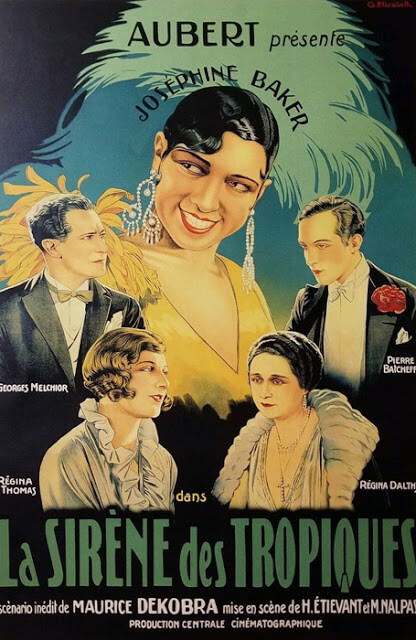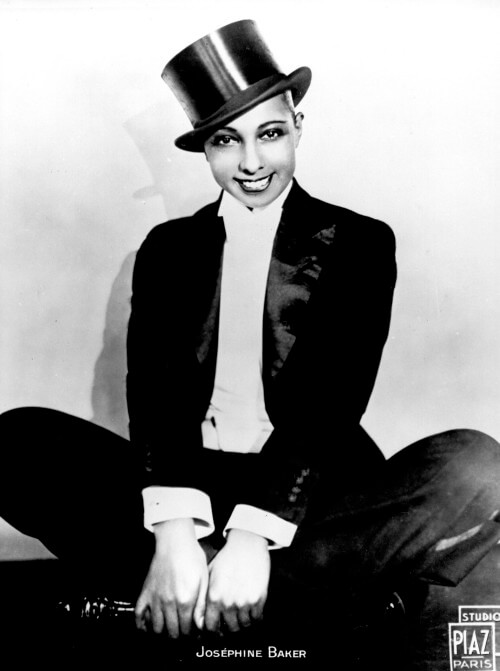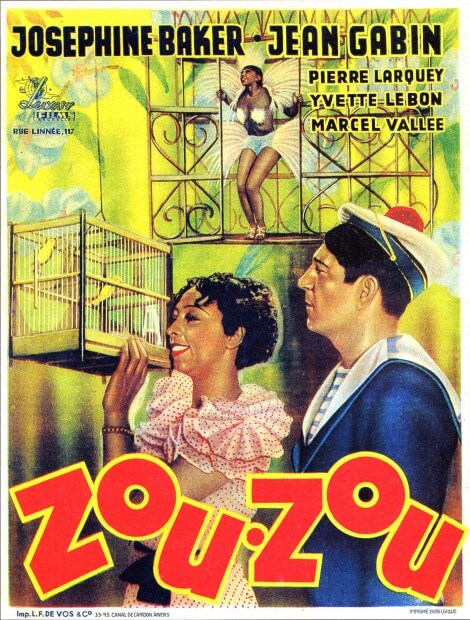Josephine Baker and the Movies
The word iconic has become somewhat hyperbole. We use this word to describe literally anyone or anything; seriously I just texted “iconic,” as a response to a friend who texted me that they made perfect toast. However, if you are trying to describe someone like Josephine Baker then iconic really is the only correct word to use. Josephine Baker was truly an icon. As a black bisexual woman who came to early 1920s Paris from the United States to join a French review, she turned Paris, then Europe, and eventually the whole world on their heads, becoming the twentieth century’s first major international phenomenon and sex symbol. There are so many aspects of Josephine’s life and career that are often discussed. There’s the Harlem Renaissance Josephine, the banana dance Josephine, the Josephine who fought for civil rights from the beginning of her career, and the concert hall Josephine, just to name a few of her eras. However, one of the aspects of her life I feel does not get brought up often enough was her movie years. I recently watched two of Josephine’s films, The Siren of the Tropics and ZouZou, and discovered that Josephine was a fabulous film actress.
Josephine made her film debut in 1927, six years after exploding on the French nightlife scene, in the French silent film, Siren of the Tropics (La Sirene des Tropiques). Josephine plays Papitou, a West Indies woman who falls in love with a Frenchman and follows him to Paris. She soon turns into a star on the French stage. Now, the movie today does not hold up well. Even though silent, all of Josephine’s dialogue is written in broken English and the story is a bit convoluted. However, what does hold up is Josephine.
Josephine is arguably the best silent film actress I have seen. She uses her body and soul to tell a story that can only move and captivate you as you watch. She is exuberant and utterly charming. She makes you sit up and pay attention to every move and the emotions expressed through her gorgeous eyes. The film also does hold cultural significance. This was the first international film to star a black woman and also did really well upon initial release, receiving positive reviews. It ran in theatres in Europe for seven months (keep in mind movies then usually stayed in theatres for a week). This silent film also showed the difference between the American and French film industries. The rules of the film industry in the United States were designed to either keep black actors in roles that are more often harmful stereotypes, or to just keep black actors out period. Black actors couldn’t be shown having romantic storylines in mainstream films, let alone have interracial romances. However, in France, things were quite the opposite for Josephine.
In the French film market, Josephine was looked at as a Goddess come down to earth to grace us mere mortals with her presence. She was not only the star, but she was the top billed star in all her films. This is important to note because in American films at this time, black actors weren’t even credited most of the time. Interracial relationships weren’t just shown on screen, but shown in a casual light. This indicated that there shouldn’t be anything shocking about a romantic relationship between a black woman and a white man, or vice versa. French filmmakers, however, were not making films about Black couples in a romantic story, so France was not perfect either, but I digress.
Black actors in the United States were supposed to appear completely sexless, but Josephine, in Paris, was allowed to express her sexuality and show off her own body. One scene in Siren, for example, has Josephine taking a bath. There is nothing sexual about this scene, but you do see the majority of her naked body. This scene made me think of the 1942 MGM film adaptation of the musical Cabin in the Sky. One of the stars of this movie, the also iconic Lena Horne, had a scene of her taking a bath cut from the film because the scene was “too suggestive,” even though MGM was more than happy to have white actress Lana Turner in a bathtub just one year earlier in Ziegfeld Girl. This really does say a lot about both markets and how even fourteen years after Josephine was seen bathing on film in France, Lena could not be shown that way in America.
Josephine’s next major film would not come until 1934’s ZouZou. In this film Josephine plays ZouZou, a woman who goes from working as a laundress to becoming a Parisian theatrical sensation. She uses the money she earns to help the man she loves, who is on trial for murder. I could not find a version of this movie with any subtitles, so watching this I really just paid attention to Josephine, and again she is perfect. She gives a multilayered performance in what we would think of as a “Pre-Code” film here in America. She can be silly and playful one minute, and heartbreaking the next. When looking at both Siren of the Tropics and ZouZou, I can safely say Josephine was one of the best film actresses of the 1920s and 1930s.
I ask myself a lot why Josephine’s movie career in France was not as grand and long-lasting as her stage work. Even though France lovingly embraced Josephine and her talents, maybe even France was not ready for their biggest film star to be a Black woman? Her films were few and far between, and when she did get film work her roles were often very similar. As I pointed out, in both films she always ends up a French stage sensation. I also think maybe Josephine was not interested in pursuing a film career. The stage was truly her home and she constantly traveled and toured the whole planet for the majority of the 1920s and 1930s, leaving little time for her to make films. I think most likely the combination of both France not being as progressive as we make them out to be in this time and Josephine’s own schedule to be the reason why her film career wasn’t extensive. However, there is one thing I am certain of: Josephine Baker was and will always be one of the most important figures of the twentieth century, and her work in films should be discussed more often.





Pingback: Vintage Glamour At The Met Gala – The Vintage Woman